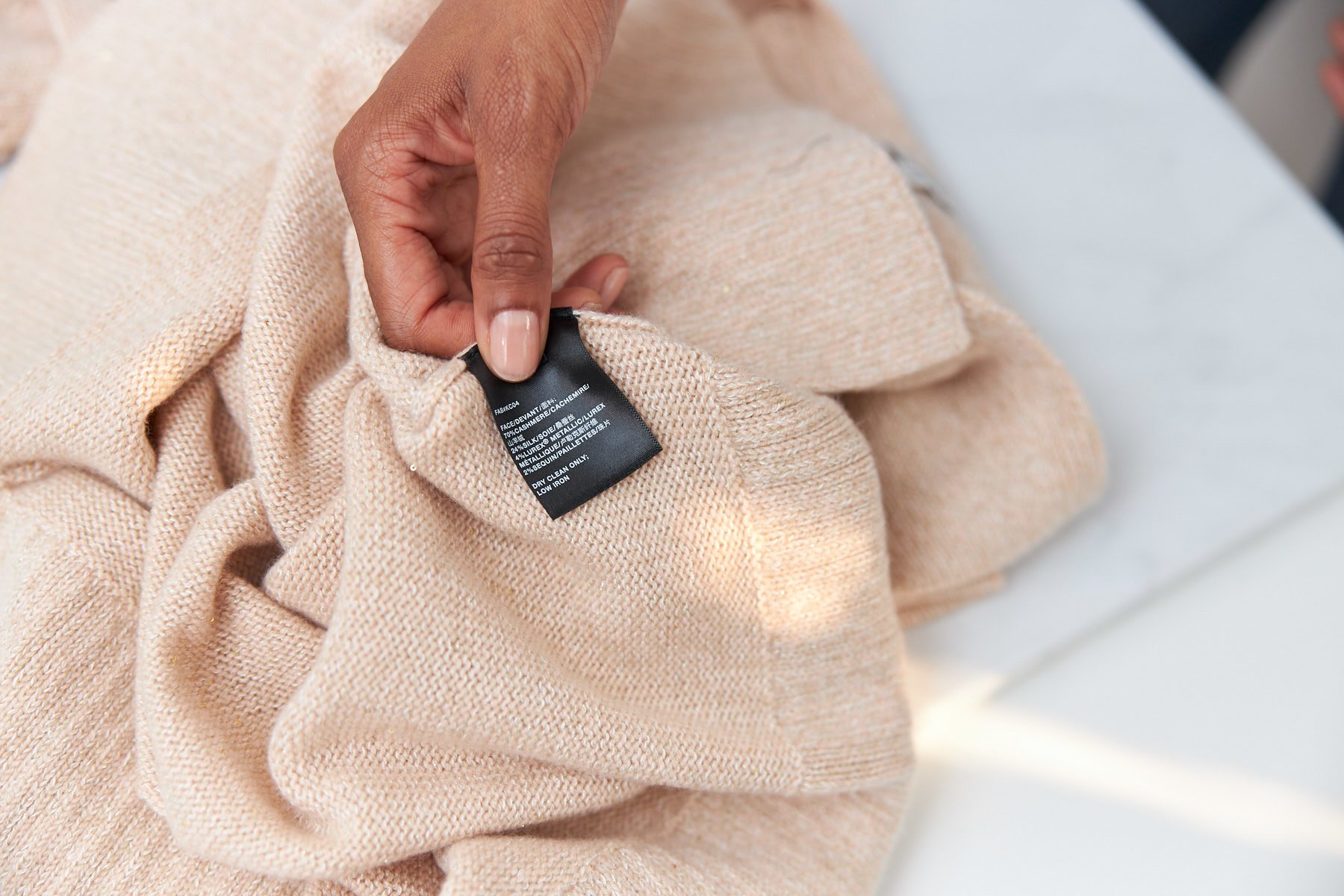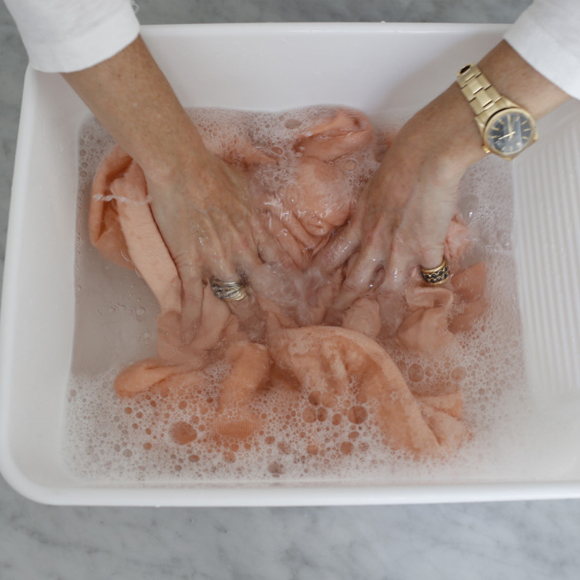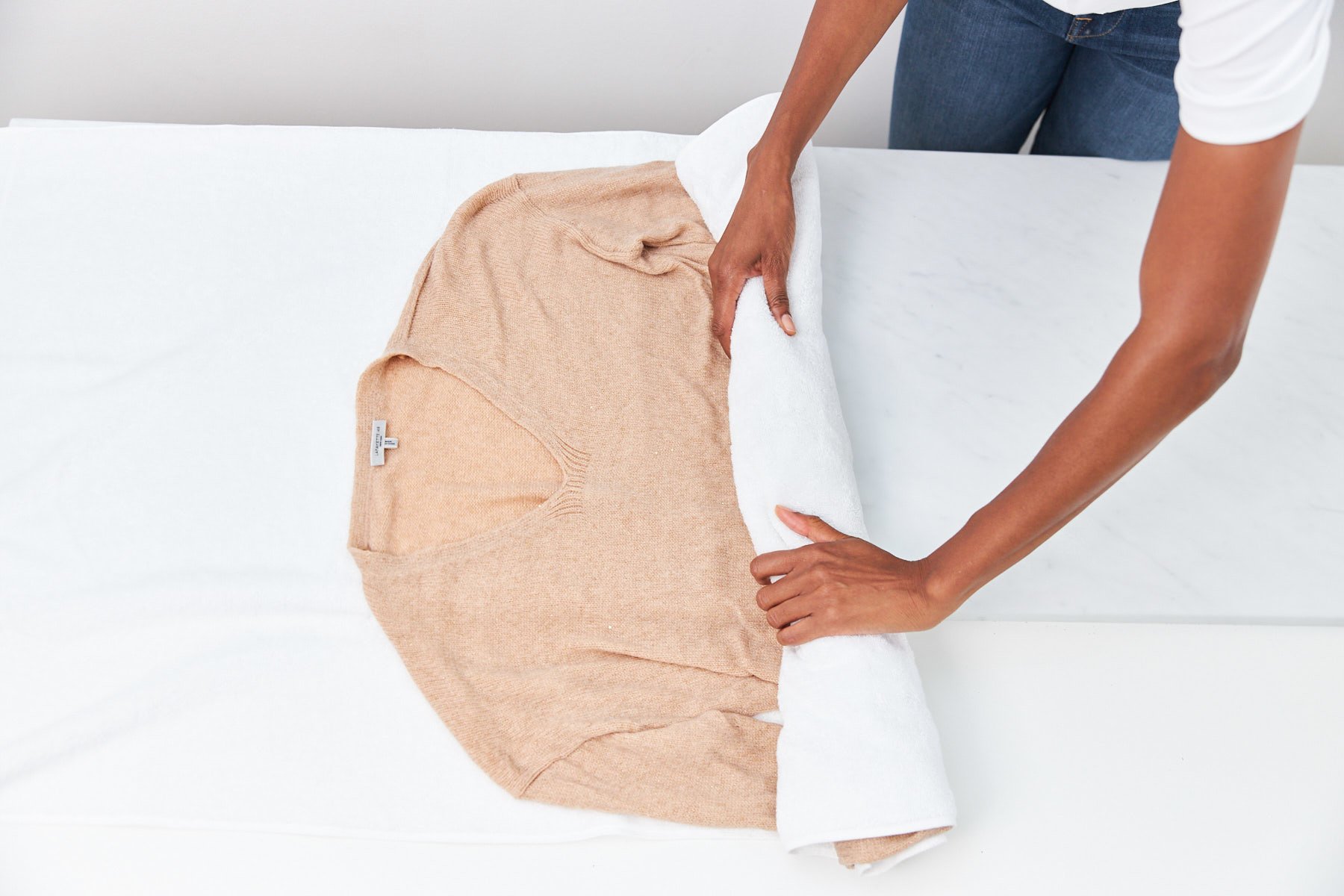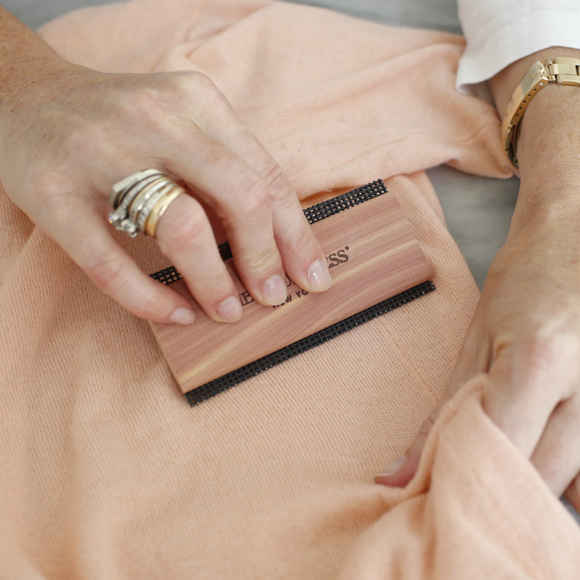Merino is prized for its soft, insulating, and moisture-wicking qualities. From fall to spring, it's the perfect fabric for a light touch of coziness.
Merino wool shrinks when washed, and fixing merino wool shrinkage isn't easy, but it can be prevented altogether. When washing, always be sure to check tags first to ensure washability. If your merino wool item says "dry clean only" or "do not wash", you're better off taking it to the professionals. Once ready to wash, retreat stains on merino wool with a stain remover for woolens. Focus on susceptible areas such as underarms, necklines, and cuffs and work in using a Stain Brush.
Merino wool is generally odor resistant; however, if any odors appear, presoak your merino wool item for 30 minutes in cool water mixed with 1/4 cup of plain white vinegar. Rinse before proceeding with laundering.


Though merino wool is often machine washable, handwashing is always the best and safest method. It's also best to avoid dry cleaning solvents and enzyme-containing detergents that can degrade the yarn of items like merino sweaters.
Add the appropriate amount of our enzyme-free Wool & Cashmere Shampoo (an ideal merino wool detergent) to a wash basin or sink filled with cool water.
Submerge the item and gently agitate the water with your hands to evenly distribute soap. Soak for up to 30 minutes.
Rinse well by running cool water through the item until the water is no longer soapy. Do not wring. Instead, press the water out of the item. This will help to avoid stretching or warping the sensitive merino wool fabric.
Merino wool is an especially washable wool. More durable merino wool items are able to withstand machine washing using a delicate setting with cold water.
When ready to wash, turn your merino wool piece inside out, and place it in a Mesh Bag. Don’t skip the use of the bag, as it provides essential protection from snagging and warping. Select the woolens or delicate cycle on the washing machine, and make sure the water temperature is cold and the spin is on low.
Add the appropriate amount of Wool & Cashmere Shampoo according to the machine and load size. Always wash like colors and fabrics together to avoid dye bleed or snagging.
Remove promptly from the washing machine to reduce creasing.


Lay the item flat in its natural shape on a drying rack or clean towel. Do not put it in the dryer!
Expedite drying by laying the item flat on a clean towel. With the item in its original shape, roll it up in the towel (like a sleeping bag) to remove excess water.
When drying, avoid direct sunlight and heat sources, such as the radiator, because they can yellow, shrink, or damage woolens. Never hang wet woolens.
To remove wrinkles, we recommend steaming for the best and safest finish. Never iron, as ironing will crush or flatten the natural pile of the yarns. To freshen merino wool, give it a light steam and spritz with Wool & Cashmere Fabric Spray.
Remove pills on finer-gauge knits, such as lightweight wool & cashmere scarves, sweaters, T-shirts, or pants, by gliding the Sweater Comb across pilled areas.
For heavier-gauge items, such as thicker sweaters, outerwear, or heavy upholstery, use the Sweater Stone.
Always work tools in one direction.
When wool fibers become loose, they form little balls or pills. Merino wool pilling is a direct result of friction (which naturally occurs with movement), so the more you wear an item, the more likely it is to pill. Use a fine garment brush between wears to remove lint, fuzz, and hair and to release natural oils that rejuvenate yarns.


Knit merino wool items should usually be stored folded to prevent stretching or distorting. Store jackets and suits using a solid structured hanger. Protect wool suits during long term storage by selecting a zippered cotton or canvas garment bag.
Storing in plastic encourages yellowing and can trap mildew-causing moisture, a prime environment for bugs.
All merino wool washing techniques are based on textile science. Not all garments perform and react as science would predict.








